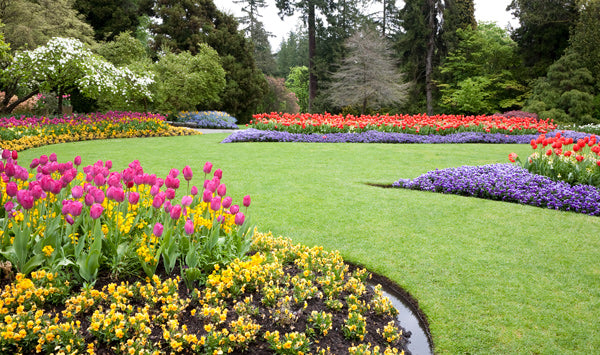Principles of Landscape Design
There are several basic principles of landscape design that reoccur across good designs. Art elements like color, line, form, texture, and scale are used in different combinations to adjust these design principles. All of these principles and elements work together to create an intended design.
Simplicity in Landscape Design
Simplicity in design is achieved by omitting all elements that do not improve or significantly impact the design. All design elements should be evaluated to determine what is important and what is not so that the design appears neat, clean, and uncluttered.

Unity in Landscape Design
Unity in landscape design occurs when all the different elements of a design composition come together to convey a sense of oneness. This is done through repetition and consistency.
A theme should be chosen that is harmonious with the character of the house and land on which it is built. The theme should be repeated throughout the design composition. The theme may be built around plants. The theme may focus on plants of a particular color, shape, or texture. Themes can also be built around shapes such as lines or curves.
Balance in Landscape Design
Balance is achieved when the design has a sense of equality of visual attraction. Every component of a design carries a certain amount of visual weight. Balance is the concept of evenly distributing weight throughout the plan.
Balance can be achieved with symmetry or asymmetry. Symmetrical balance (or formal balance) occurs when two sides of the landscape are identical mirror images of each other. Asymmetrical balance (or informal balance) occurs when the two sides of the landscape use different elements and objects with differing weights but overall, the total visual weights of each side are similar. For example, one side of the design may have a single large object which is offset on the other side with several smaller objects.
Transition in Landscape Design
Transition refers to gradual change. This can occur in color, such as using a monochromatic color scheme. This can also occur when arranging objects of various sizes, textures, or forms in a logical, progressive order. Transition is a three-dimensional concept in landscape compositions, not just a two-dimensional concept.
Rhythm in Landscape Design
Rhythm in landscape design refers to a sequence of movements and rests, like in music. Elements in the design lead the viewer’s eye through (and sometimes even beyond) the designed area.

Focalization in Landscape Design
Focalization is known by many names including accent, emphasis, and dominance, and it involves the leading of the viewer’s eye toward important feature by placing the feature at the vanishing point between radial and approaching lines. Straight lines create stronger focalization as is evidenced by the way the lines on The Mall in Washington, D.C. directs the eye of a viewer on the Capital steps towards the Washington Monument at the other end of The Mall. Generally, weaker curved lines are more desirable in a residential landscape since they gradually direct the eye providing a more relaxed environment.
Repetition in Landscape Design
Repetition refers to the repeated use of features with the same shape, line, form, texture, and/or color throughout a landscape composition. While too much repetition can create monotony, the right amount can lead to rhythm, accents, and unity.
Contrast and Harmony in Landscape Design
Contrast is used to highlight certain elements in your design. Contrasting colors, plant sizes, textures, leaf structures, and more when placed side-by-side can add interest and draw the viewer’s attention. Harmony helps differing elements in a landscape design look unified. It is achieved when all architectural and design elements and objects combine to create a visually satisfying effect. A balance must be struck between harmony and contrast in your design.
Proportion in Landscape Design
Proportion refers to the size of the landscape design components in relation to each other and to the entire design. Absolute proportion is the scale or size of an object. Relative proportion is the scale or size of an object relative to that of another object such as the human scale where objects sizes are considered relative to the size of the human body. The human scale is typically used when considering plant material, ornaments, and garden structures, but there are other important relative proportions such as the size of the house, the yard, and the area to be planted.

